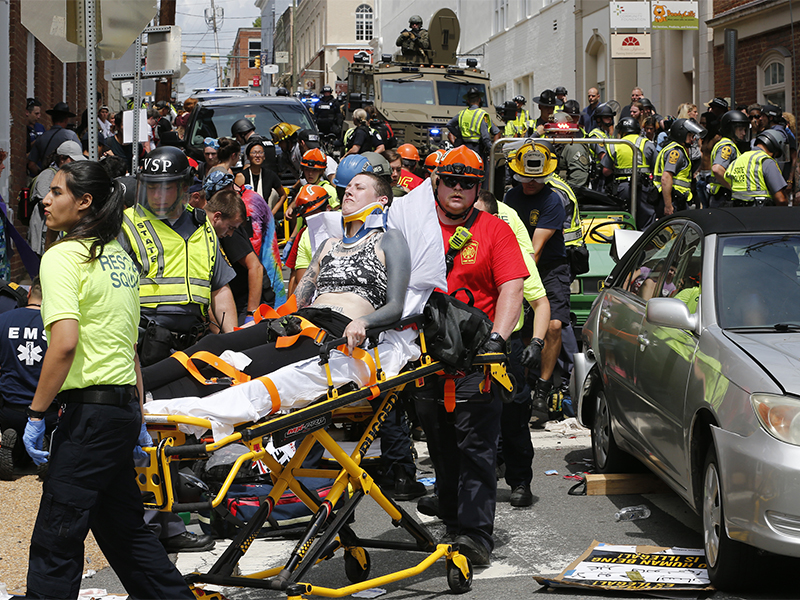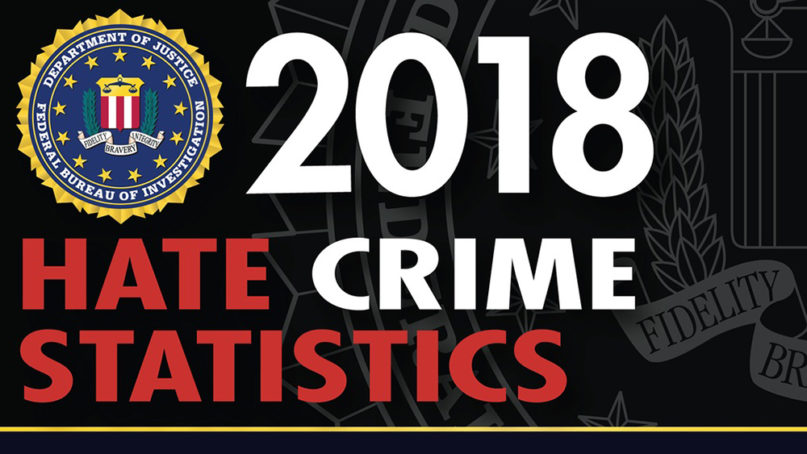(RNS) — Last week the Federal Bureau of Investigation released its annual report on hate crime statistics, based on data from the year 2018. As in previous years, the FBI’s numbers paint a damning picture of hate in America: Anti-Semitic homicides in the United States reached their highest level ever; racially motivated hate against Latinos went up by 13% since the year before, and 48% over the past five years; anti-transgender hate crimes rose nearly 34%; and anti-Sikh attacks increased 300% over the past year.
While reported hate crimes decreased slightly overall, from 7,175 in 2017 to 7,120 in 2018, the statistics show that the incidents had become more violent. Hate crimes targeting individuals (as opposed to property) rose to 4,571 — an 11.8% increase since 2017.
But as bad as the FBI’s data is, the reality is likely worse. These numbers tell us only part of the story of hate in America, because most hate crimes still go unreported in our country. According to the Federal Bureau of Justice Statistics, an average of 250,000 hate crimes occur on American soil every year; the latest FBI data, however, only documented 7,210 incidents. Based on these estimates, the FBI data captures less than 3% of the overall picture.
RELATED: FBI report: Jews the target of overwhelming number of religious-based hate crimes
There are many reasons why the FBI statistics are flawed. Perhaps the most notable, however, relates to how the information is collected.
Less than 13% of law enforcement agencies nationwide affirmatively report hate crimes in their districts. Of the 18,000 law enforcement agencies around the country, more than 14,000 of them “reported that no hate crimes occurred in their jurisdictions in 2018.”
A number of large cities share no data with the FBI. Four states in the country — Georgia, South Carolina, Arkansas and Wyoming — still don’t even have hate crime laws, which can obviously hinder proper reporting as well.
Any scholar will tell you that a flawed methodology will result in a flawed overall picture. And that’s precisely what we are looking at with the FBI report for 2018 and every year prior — a flawed overall picture.
In a political and social context in which we know hate is surging and becoming normalized to the point that incidents of physical violence jumped nearly 12% in a single year, we simply must have a clearer picture of what the actual problem is.
If we don’t understand the nature and magnitude of hate in this country, how can we expect to address it effectively?

Rescue personnel help injured people after a car ran into a large group of protesters after a white nationalist rally in Charlottesville, Va., on Aug. 12, 2017. One person was killed and 19 were injured in the incident. (AP Photo/Steve Helber; caption amended by RNS)
In 2017, a neo-Nazi killed Heather Heyer when he drove his car into a crowd of protesters in Charlottesville, Virginia. It was one of the most high-profile hate crimes in American history, and it was prosecuted as such under the Matthew Shepard and James Byrd, Jr. Hate Crimes Prevention Act of 2009. Yet the FBI did not include Heyer’s murder in its statistics because, as CNN reported in August, “the FBI’s national statistics on hate crimes … are based on voluntary reporting from local agencies with differing definitions of hate crimes and can be riddled with errors.”
A similar situation transpired after the 2016 murder of Khalid Jabara in Tulsa, Oklahoma. The bias-motivation was as clear as it was in Charlottesville. His murderer had harassed the Jabara family in the past and during the attack on Khalid shouted slurs, including “dirty Arab,” “Mooslem,” and “dirty Lebanese.” The prosecution successfully brought state hate crime charges to the first-degree murder conviction. But Jabara’s murder didn’t make the annual FBI report.
I have seen and worked on similar cases within the Sikh community that have not been captured in the FBI reporting — and I know how devastating it can be to feel like you don’t even have the dignity of being a hate crime statistic. In a 2017 incident in Carson City, Nevada, an assailant attacked five Sikh men and wounded one in bias-motivated crime. He was sentenced to 34 years in prison with hate crime enhancement — yet the assault does not appear in the FBI’s 2017 data as a hate crime.
This is as frustrating as it is painful, a sharp reminder that our government apparently doesn’t even care enough about us to accurately capture — let alone address — the hate that we endure.
Experts and advocates have been saying for years that the system is flawed and requires an upgrade. And politicians have finally begun to move on it. In June of this year, Virginia Senators Mark Warner and Tim Kaine proposed new legislation, the Khalid Jabara-Heather Heyer “NO HATE” Act.
The bipartisan measure (with companion legislation introduced in the House) will vastly improve hate crime reporting with funding for resources at the state level, including critical training for law enforcement and the establishment of hate crime reporting hotlines. Legislation like this will be helpful in standardizing how we report hate in this country and, ultimately, help us get a better picture of what’s actually going on.
In the meantime, it is alarming that four years after the FBI began releasing these numbers annually, they still only begin to scratch the surface of what marginalized communities in this country are going through and what bigots in this country feel emboldened to do.
If we want to at least pretend like we care about finding solutions for our epidemic of hate, we must, at the bare minimum, commit to getting a better and more accurate picture of who continues to suffer from hate in America. Until then, we will continue to distort the truth for our own comfort, ignoring the gruesome realities that lie underneath it all.






